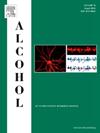1990年至2021年酒精所致胰腺炎的流行病学和人口统计学驱动因素:来自2021年全球疾病负担研究的结果发表于:酒精。
IF 2.9
4区 医学
Q3 PHARMACOLOGY & PHARMACY
引用次数: 0
摘要
背景:酒精对胰腺炎有显著影响,导致全球高死亡率和健康负担。本研究利用2021年全球疾病负担(GBD)数据,研究了1990年至2021年酒精所致胰腺炎(AAP)的趋势,重点关注人口统计学、时间和区域变化,为政策制定提供信息。方法:根据社会人口指数(SDI)、性别和年龄组,分析1990年至2021年204个国家的aap相关死亡和残疾调整生命年(DALYs)。年龄-时期-队列模型评估了年龄标准化死亡率(ASDR),分解分析量化了人口增长、老龄化和流行病学变化的影响。结果:与aap相关的DALYs从1990年的40.17万增加到2021年的69.93万,尽管ASDR和ASMR在全球范围内呈下降趋势。低SDI和中低SDI地区,特别是40岁以下人群的负担明显增加,而高SDI地区的控制效果较好。由于酒精消费模式,男性面临着不成比例的高负担,尽管一些区域的女性负担有所增加。低sdi地区的医疗保健有限,酒精使用增加,政策薄弱,年轻人口是负担增加的主要原因。据预测,到2050年,每年残疾调整生命年为114.6万,其中男性占90%以上。开发了一个GBD-AAP可视化平台来显示负担数据和趋势。结论:AAP存在显著的地区差异和性别差异。在低sdi地区和年轻男性中,有针对性的措施,包括酒精管制、资源分配和公共卫生教育,对于减轻AAP负担至关重要。GBD-AAP平台为有针对性的干预提供了有价值的工具。本文章由计算机程序翻译,如有差异,请以英文原文为准。
Epidemiological and demographic drivers of alcohol-attributable pancreatitis from 1990 to 2021: Findings from the 2021 Global Burden of Disease study
Background
Alcohol significantly contributes to pancreatitis, causing high global mortality and health burden. This study examines trends in alcohol-attributable pancreatitis (AAP) from 1990 to 2021 using Global Burden of Disease (GBD) 2021 data, focusing on demographic, temporal, and regional variations to inform policymaking.
Methods
AAP-related deaths and disability-adjusted life years (DALYs) were analyzed across 204 countries from 1990 to 2021, stratified by Sociodemographic Index (SDI), gender, and age groups. An age-period-cohort model assessed age-standardized DALY rates (ASDR), and decomposition analysis quantified impacts of population growth, aging, and epidemiological changes.
Results
AAP-related DALYs rose from 401,700 in 1990 to 699,300 in 2021, though ASDR and ASMR showed declines globally. Burden increased notably in low and lower-middle SDI regions, especially among those under 40, while high SDI regions achieved better control. Males faced a disproportionately high burden due to alcohol consumption patterns, although some regions saw rising female burdens. Low-SDI areas suffered from limited healthcare, increasing alcohol use, and weak policies, with younger populations contributing significantly to rising burdens. Projections estimate 1.146 million DALYs annually by 2050, with males comprising over 90%. A GBD-AAP visualization platform was developed to present burden data and trends.
Conclusions
AAP exhibits significant regional and gender disparities. Targeted measures, including alcohol regulation, resource allocation, and public health education, are critical in low-SDI regions and among young males to mitigate AAP burden. The GBD-AAP platform offers valuable tool for targeted interventions.
求助全文
通过发布文献求助,成功后即可免费获取论文全文。
去求助
来源期刊

Alcohol
医学-毒理学
CiteScore
4.60
自引率
4.30%
发文量
74
审稿时长
15.6 weeks
期刊介绍:
Alcohol is an international, peer-reviewed journal that is devoted to publishing multi-disciplinary biomedical research on all aspects of the actions or effects of alcohol on the nervous system or on other organ systems. Emphasis is given to studies into the causes and consequences of alcohol abuse and alcoholism, and biomedical aspects of diagnosis, etiology, treatment or prevention of alcohol-related health effects.
Intended for both research scientists and practicing clinicians, the journal publishes original research on the neurobiological, neurobehavioral, and pathophysiological processes associated with alcohol drinking, alcohol abuse, alcohol-seeking behavior, tolerance, dependence, withdrawal, protracted abstinence, and relapse. In addition, the journal reports studies on the effects alcohol on brain mechanisms of neuroplasticity over the life span, biological factors associated with adolescent alcohol abuse, pharmacotherapeutic strategies in the treatment of alcoholism, biological and biochemical markers of alcohol abuse and alcoholism, pathological effects of uncontrolled drinking, biomedical and molecular factors in the effects on liver, immune system, and other organ systems, and biomedical aspects of fetal alcohol spectrum disorder including mechanisms of damage, diagnosis and early detection, treatment, and prevention. Articles are published from all levels of biomedical inquiry, including the following: molecular and cellular studies of alcohol''s actions in vitro and in vivo; animal model studies of genetic, pharmacological, behavioral, developmental or pathophysiological aspects of alcohol; human studies of genetic, behavioral, cognitive, neuroimaging, or pathological aspects of alcohol drinking; clinical studies of diagnosis (including dual diagnosis), treatment, prevention, and epidemiology. The journal will publish 9 issues per year; the accepted abbreviation for Alcohol for bibliographic citation is Alcohol.
 求助内容:
求助内容: 应助结果提醒方式:
应助结果提醒方式:


